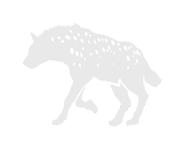
Luggage requirements for your Kruger safari.
For Kruger park safaris, this blog encourages our guest to pack light luggage. We have space for one suitcase and a backpack or laptop bag.

Weather in Kruger National Park and which clothes to pack.
This blog provides the average weather when visiting Kruger National Park and what clothes to pack based on this. You will need a jumpsuit set and a beanie for the cool morning and evening game drives.

The difference between a private game reserve and a Kruger National Park safari
Seeing animals in their natural habitat (inside the Kruger National Park) rather than smaller private game reserves is explained in this blog post.

Kruger National Park rest camp safety and rules
Kruger National Park Rest Camps have rules to ensure your safety. This blog explains a bit more of these rules and why they are important to follow.

Wild Kruger Park Tours is a Green Company
Wild Kruger Park Tours is a GREEN company. We are trying to have a huge impact on the environment and our natural resources, by going GREEN.

Contribution towards the Wildlife Conservation Trust
Contributing toward wildlife is always so touching, especially with regards to saving our animals. Most of these animals become endangered if we as a community don't do everything in our power to safe them and keep them around. Compliments to the Wildlife Conservation Trust.

Drought in the Kruger National Park
One of the biggest concerns for Sanparks is the river systems due to water quality and levels. People are however actively involved to restrict water usage (for example irrigation). Some animals do better such as predators do better in these conditions.

Kruger Mountain and Jock of the Bushveld Route
Embark on a historical exploration by visiting Kruger Country Retreat. We are situated in the Peebles Valley, also known as the Jock of the Bushveld Conservancy. On your stay you will be able to visit one of the Jock of the Bushveld hotspots, awakening the wonderful heart-warming story that still lives on today.

Small Five in the Kruger National Park
The term Small 5 or Little 5 came into being, after nature conservationists requested visitors to also acknowledge the smaller, less noticed, but still astonishing, animals of the African Wildlife in South Africa.

Save the Rhino – Celebrating World Rhino Day Events
There were one a lot of Rhinos throughout Africa and Asia with a population of 500 000 in the early twentieth century. But unfortunately, despite intensive conservation efforts, poaching of this beatifull species is dramatically increasing, pushing the surviving rhinos closer and closer towards extinction.

Bush Baby spotted in Kruger National Park
We spotted this cute little fellow last night in the tree behind our house in the Greater Kruger National Park Area. The Bush Babies or Galagos of Africa are of the smallest primates on the continent and are not easily seen due to being active at night.

Entrance Gates of the Kruger National Park
The following are the list of entrance gates of the Kruger National Park: Berg-en-Dal Crokodile Bridge Letaba ...

Leopard vision – The Eyes of the Leopard and Lion
The leopard vision facts, African Wildlife offers the Big 5 and the Leopard and Lion forms part of this. Learn more!

Elephant, one of the Big 5
African Elephants are listed as vulnerable by the International…

Zebra Most Popular to People
According to NationalGeographic.Com, there are two species…

Big 5 Attraction and Conservation
The big five are among the most dangerous and was the most popular…
